Native Azaleas Deserve A Spot In Your Southern Garden
Evergreen azaleas are so ubiquitous in Southern gardens that no one could blame you for thinking they evolved here. Still, you'd be wrong. They hail from Japan and Korea and first appeared in the U.S. around 1800.
Native azaleas (aka deciduous azaleas) were here all along. Unlike their Asian cousins, native species lose their leaves in winter and grow open and upright rather than forming dense mounds. Flowers are spectacular. Long stamens and sweet fragrance earn them the nickname, "wild honeysuckle."
Few shrubs can equal deciduous azaleas for showiness and range of color, and this has fueled the development of many excellent hybrids over the years. They offer the yellow, gold, peach, orange, and flaming red colors that are missing or rare among evergreen azaleas—and fall foliage is often brilliant orange-red to maroon. The flowers of some native azaleas are highly fragrant.
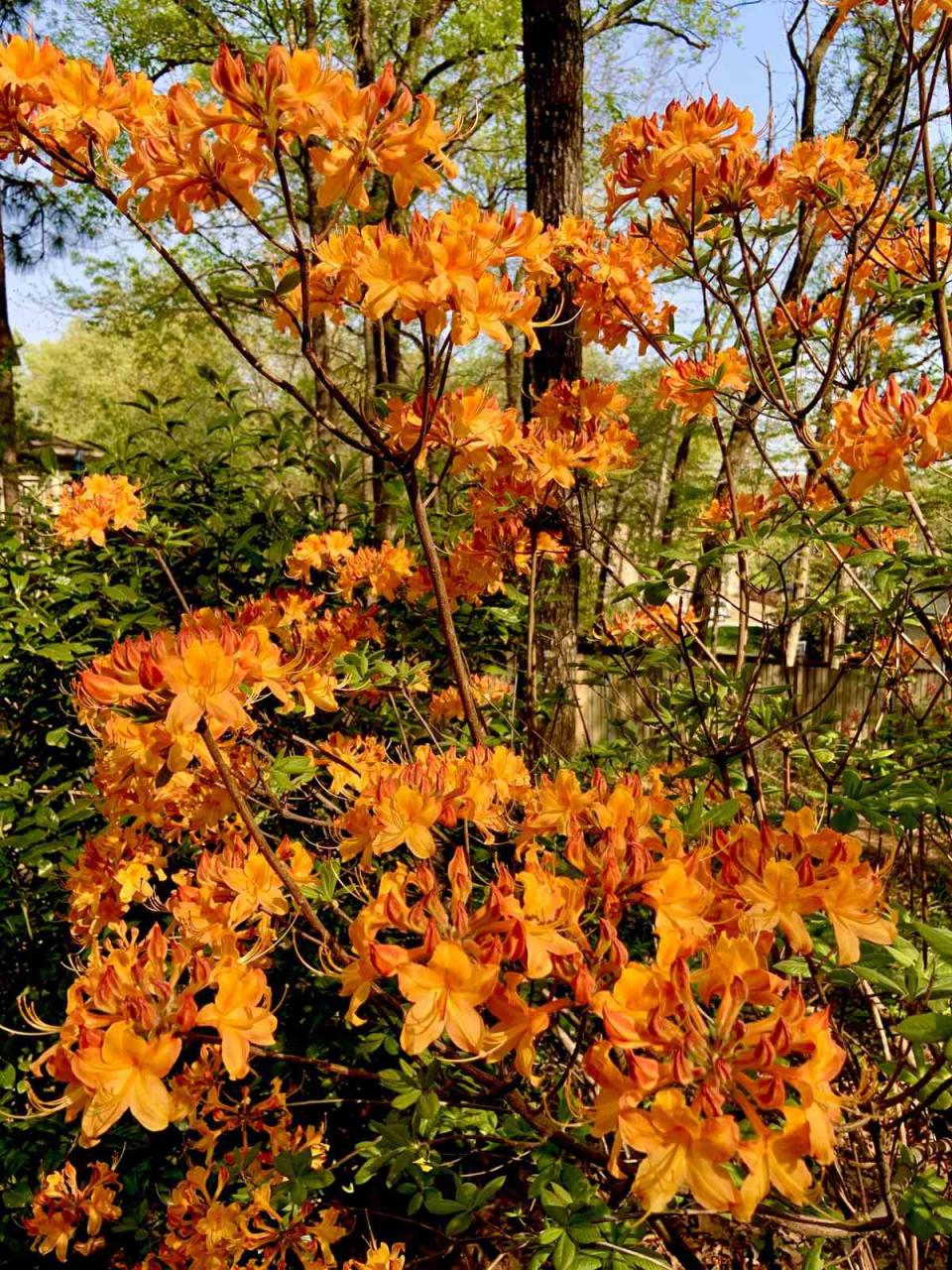
Steve Bender Florida flame azalea
5 Top Deciduous Azaleas
I could suggest a slew of species to try, but so as to not overwhelm you with choices, I'll simply introduce the following five. All are fragrant and easy to grow, as long as you supply the basics—sun, well-drained soil, and consistent watering.
Florida flame azalea (Rhododendron austrinum)
Native to northern Florida as well as southern parts of Georgia, Alabama, and Mississippi, this species thrives in the heat. It's a parent of many popular, heat-tolerant hybrids including 'Aromi Sunrise' (above), 'Admiral Semmes,' and 'Stonewall Jackson.' Growing 8 to 10 feet tall, it bears yellow, gold, orange, red, or pink blooms. It's hardy in USDA Zones 6 to 9.
Alabama azalea (Rhododendron alabamense)
Native to Alabama and Georgia, this azalea grows 5 to 6 feet tall and suckers to form colonies. Its highly fragrant, sweet-spicy blossoms are white with yellow blotches. Grow it in USDA Zones 7 to 9.
Piedmont azalea (Rhododendron canescens)
This large, vigorous shrub is native from North Carolina west to East Texas. It suckers to form clumps (but not invasive ones) up to 10 feet tall. Flowers vary from pink to white to rose. It does well in USDA Zones 5 to 9.
Pinxterbloom azalea (Rhododendron periclymenoides)
In my younger days, I sometimes confused this with piedmont azalea, but notable differences distinguish it. Its native range is far more Northern, extending from North Carolina up to Massachusetts and Ohio. It's smaller and slower growing, reaching about 3 to 4 feet. Finally, its white, pink, or lavender flowers are even more fragrant. Try this one in USDA Zones 4 to 8.
Sweet azalea (Rhododendron arborescens)
"Arborescens" means tree-like and that's certainly the case here, as plants in the wild may grow 20 feet tall. In your garden, though, expect half of that. Native to the Appalachians from Pennsylvania to Alabama, it bears intensely sweet white blossoms with prominent red stamens. It's well-suited to USDA Zones 4 to 7.
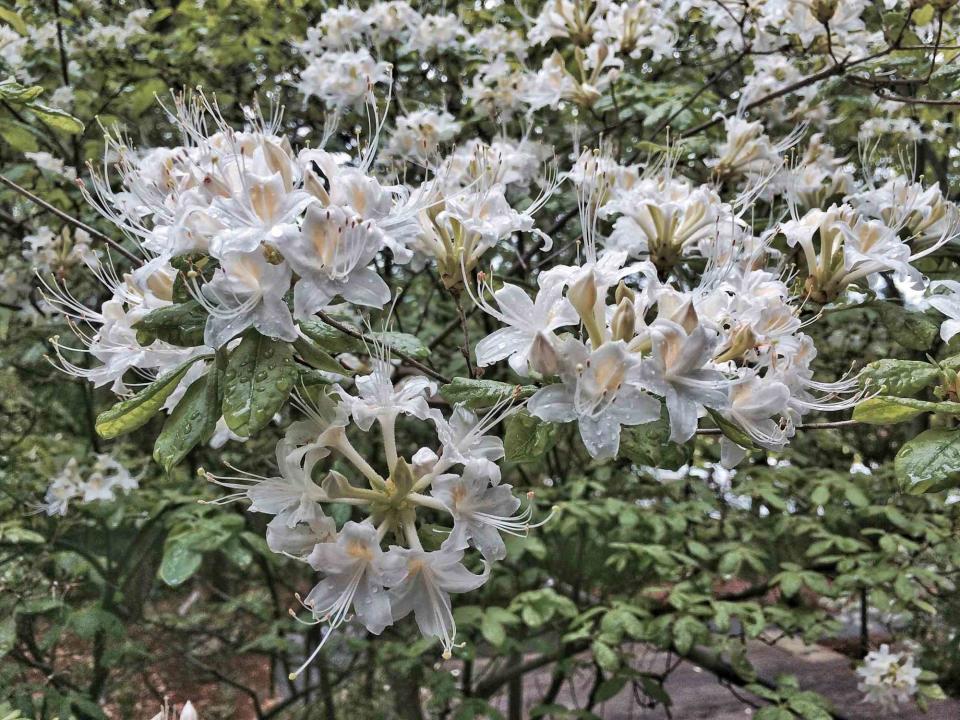
Steve Bender Native Alabama azalea offers fragrant, white blooms in spring.
Native Azaleas or Wild Honeysuckle?
Because some native azaleas share physical characteristics with Japanese honeysuckle—delicate blossoms with long, protruding stamens—some folks call it "wild honeysuckle." But it isn't honeysuckle and that's a very good thing.
You see, Japanese honeysuckle (Lonicera japonica) is an invasive vine that spreads by seed and traveling roots, choking pristine woodlands with impenetrable tangles of twining stems. It's among the most evil weeds ever introduced into the U.S.
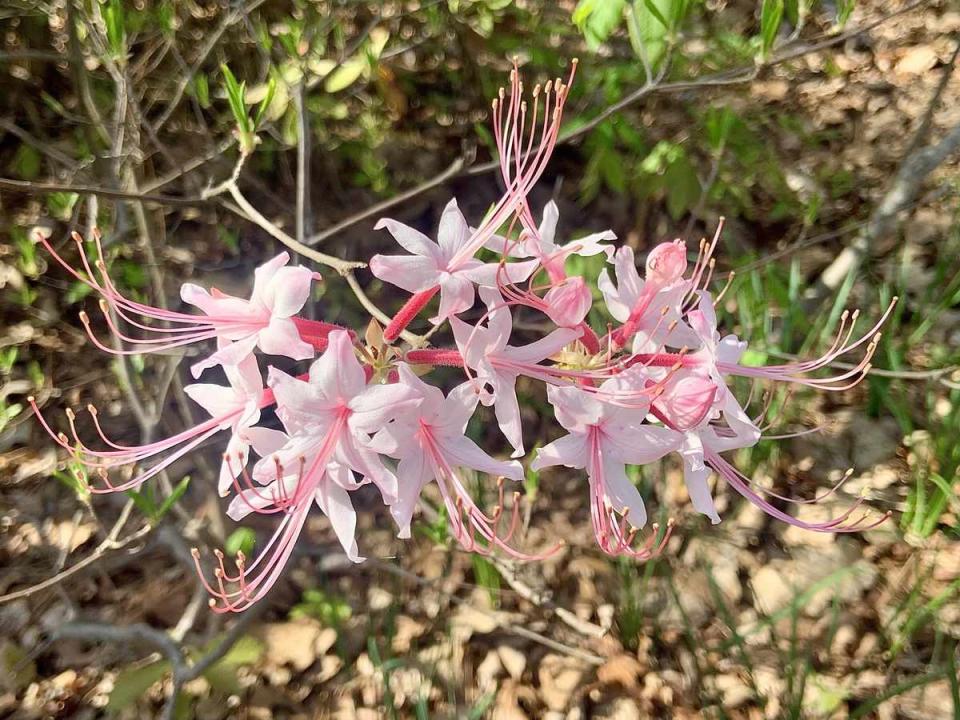
Steve Bender Piedmont Azalea
No such fate awaits those who plant the well-mannered Piedmont azalea (Rhododendron canescens) shown above. Piedmont azalea thrives in my Alabama garden where it enjoys dappled sun/shade and moist, well-drained, acid soil containing lots of organic matter from decaying tree leaves. A naturalistic setting suits it best, so I combined it with other native woodland plants, including ferns, wild ginger, Virginia bluebells, dogwood, serviceberry, strawberry bush, red buckeye, and huckleberry.
A similar looking native azalea, pinxterbloom azalea (Rhododendron periclymenoides), has a more northerly native range stretching from Massachusetts to Tennessee and north Georgia. My father planted one in our backyard when I was growing up in Maryland and it was always a treat when it flowered. Ours bloomed pink, but white and lavender forms occur.
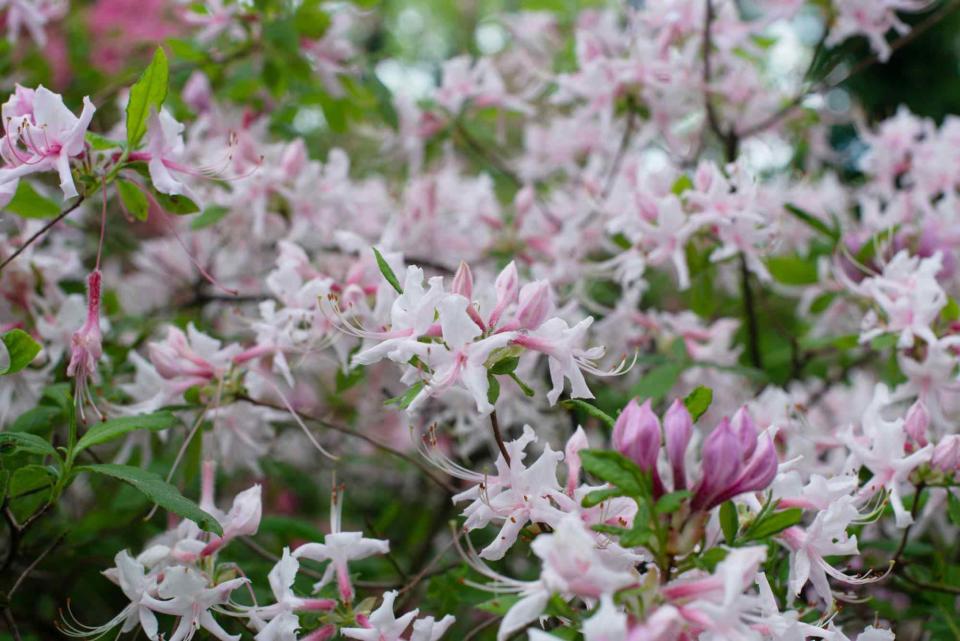
Getty Images Pinxterbloom azalea
FAQs
Where can I buy native azaleas?
Though they may grow wild all around you, taking native azaleas from the woods behind your house is a big no-no. In addition to being illegal in many states, wild gathered plants often don't survive. Instead, look for nursery-grown plants at local garden centers or online. Independent garden centers that carry a wide variety of native plants are your best bet. Plant sales at botanical gardens are another useful source. That's where mine came from.
How do I plant native azaleas?
Start by picking the perfect spot. Plant in part sun or light shade. If the shade is too dark, flowering will be sparse to nonexistent. Make sure the top of the root ball is a teeny bit higher than the surrounding soil and then cover it with an inch of organic mulch. Nursery-bought plants come with fertilizer added, so don't add any more. Spring and fall are the best times to plant native azaleas.
How do I grow native azaleas?
Deciduous azaleas aren't hard to grow by any means, but they are a bit less forgiving than their evergreen counterparts. Here are a few key tips for taking care of your native azalea:
Although some species grow in wet soil, most, including those mentioned above, like good drainage. Give them moist, acid, fertile soil containing lots of organic matter, such as chopped leaves, composted cow manure, and ground bark.
Water your deciduous azaleas several times a week during droughts in summer and fall.
Pruning is seldom required, but if necessary, do it soon after the shrub finishes blooming.
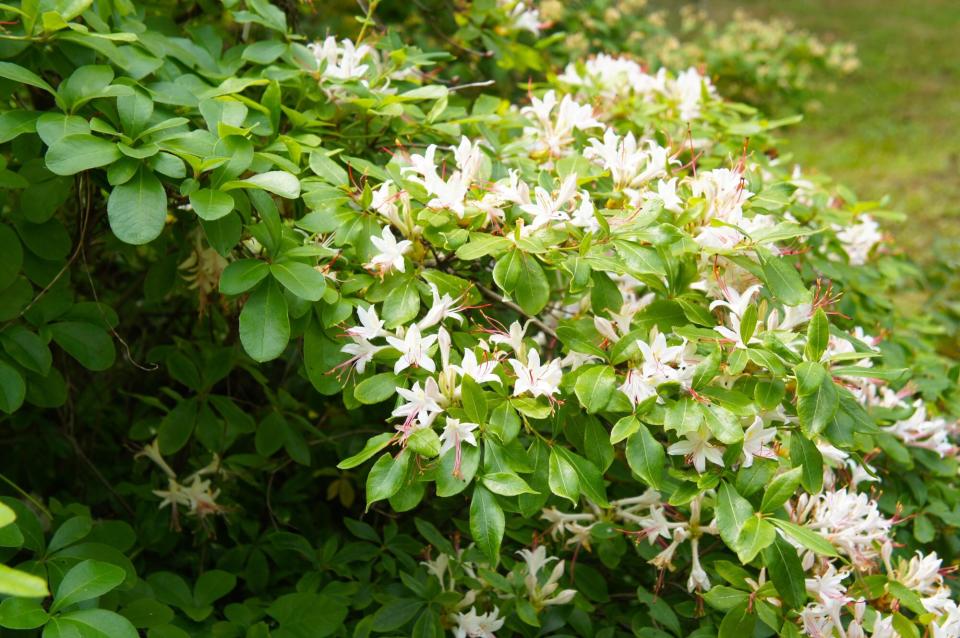
skymoon13/Getty Sweet azalea

